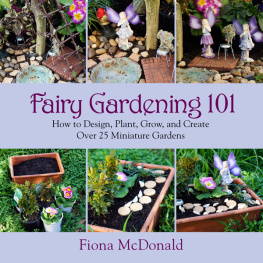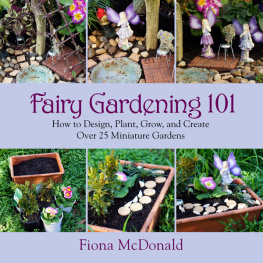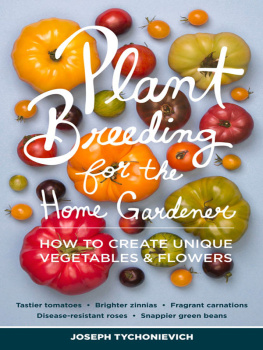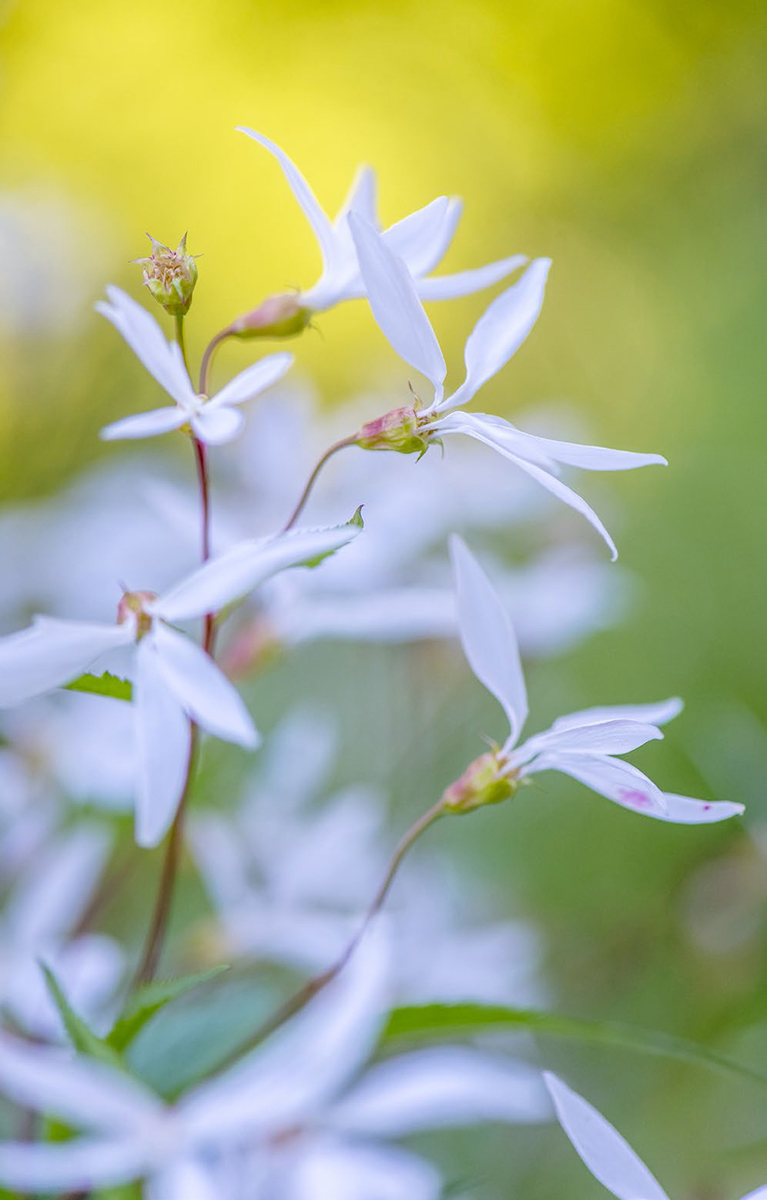
Bowmans root (Porteranthus trifoliatus), a North American species, has loose panicles of ethereal white flowers.
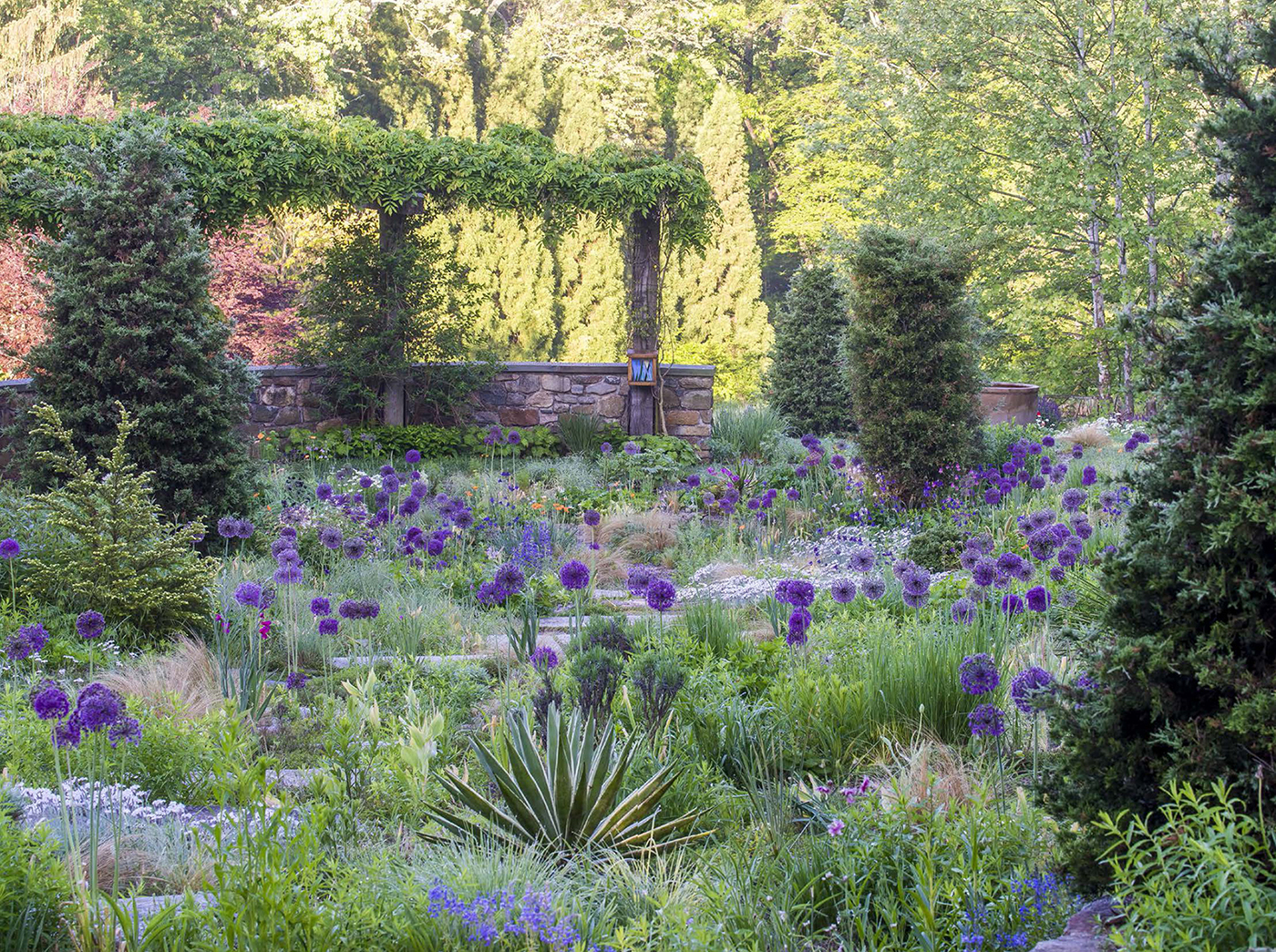
The Gravel Garden rolls into late spring with the last hurrah of bulbs, includingAllium hollandicumPurple Sensation.
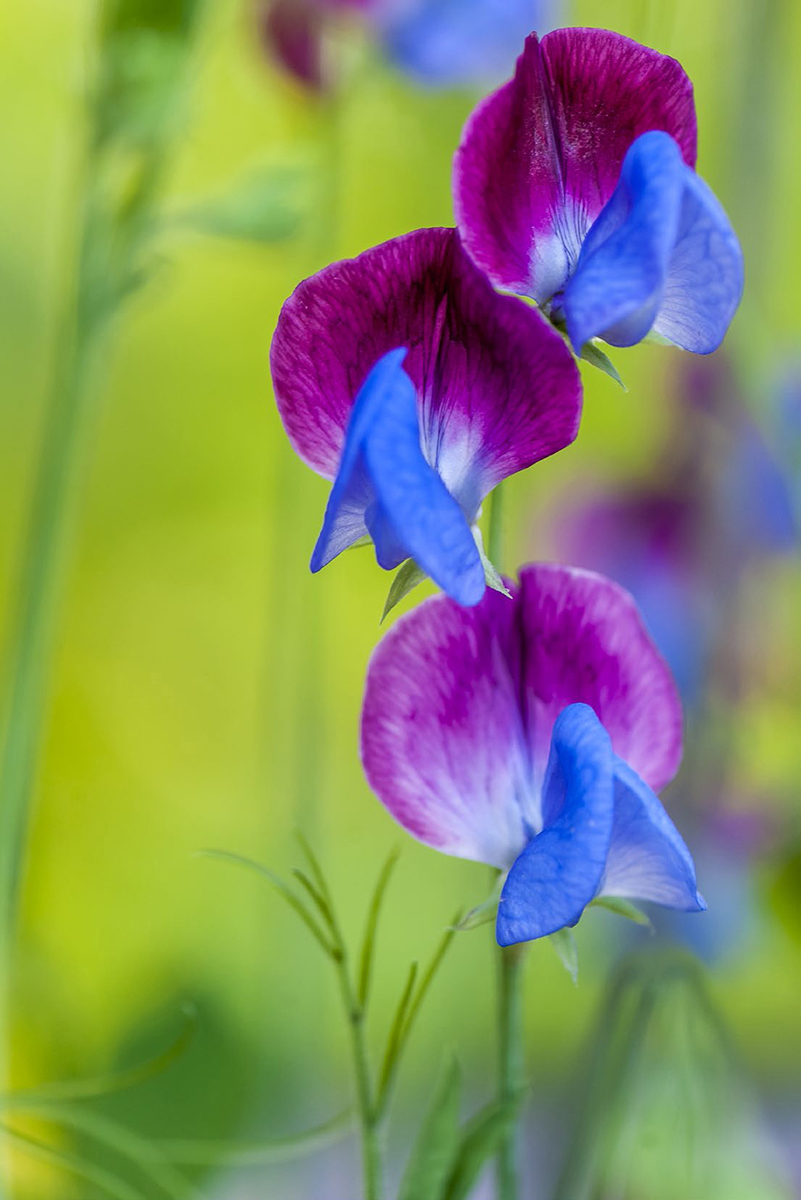
The scented blossoms of sweet pea (Lathyrus odoratus Matucana) are a delight for eye and nose.
The Art of Gardening
DESIGN INSPIRATION AND INNOVATIVE PLANTING TECHNIQUES FROM CHANTICLEER
R. WILLIAM THOMAS
with Eric Hsu, Dan Benarcik, Peter Brindle, Bryan Christ, Doug Croft, Fran DiMarco, Joe Henderson, Ed Hincken, Erin McKeon, Lisa Roper, Emma Seniuk, Anne Sims, Scott Steinfeldt, Przemyslaw Walczak, and Jonathan Wright
Photographs by Rob Cardillo
TIMBER PRESS
Portland, Oregon
Acknowledgments
We would like to thank all who have ever been a part of Chanticleer, especially Adolph and Janet Rosengarten, the Chanticleer Board, and the Chanticleer staff (full-time, part-time, seasonal, and volunteer); Christopher Woods for developing Chanticleer from a pretty estate to an amazing public garden; Eric Hsu for his correction of nomenclature, editorial comments, review of photos, and writing of captions; and Ann Brown and Gari Brindle for their diligent editing.
Copyright 2015 by the Chanticleer Foundation. All rights reserved.
Published in 2015 by Timber Press, Inc.
All photos by Rob Cardillo except those on (Lisa Roper).
The Haseltine Building
133 S.W. Second Avenue, Suite 450
Portland, Oregon 97204-3527
timberpress.com
Text design by Laura Shaw Design, Inc.
Cover design by Anna Eshelman
Library of Congress Cataloging-in-Publication Data
Thomas, R. William (Roger William), author.
The art of gardening: design inspiration and innovative planting techniques from Chanticleer/R. William Thomas with Eric Hsu, Dan Benarcik, Peter Brindle, Bryan Christ, Doug Croft, Fran DiMarco, Joe Henderson, Ed Hincken, Erin McKeon, Lisa Roper, Emma Seniuk, Anne Sims, Scott Steinfeldt, Przemyslaw Walczak, Jonathan Wright; photographs by Rob Cardillo. First edition.
pages cm
Includes index.
ISBN 978-1-60469-544-1
1. GardensPennsylvania. 2. GardensDesign. 3. Chanticleer Gardens (Wayne, Pa.) I. Cardillo, Rob, photographer. II. Title. III. Title: Design inspiration and innovative planting techniques from Chanticleer.
SB466.U7C435 2015
635dc23
2015014313
A catalog record for this book is also available from the British Library.
Contents
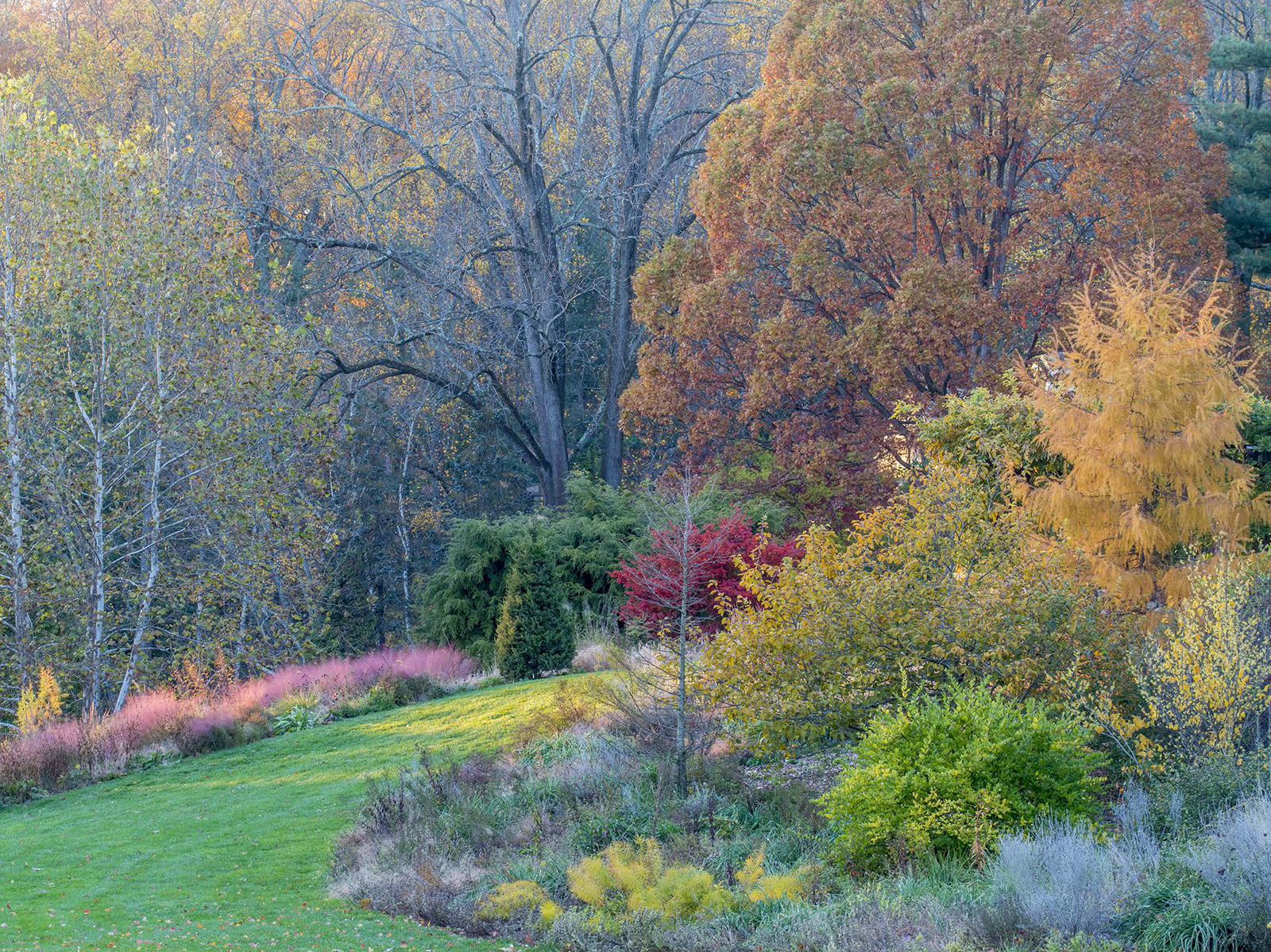
An autumnal view toward the Pond Gardens Rock Ledge and the Winter Shrub Border: Chanticleers encore arrives through colorful autumn foliage and grasses (a streak of Muhlenbergia capillaris glimmers in the fading light).
INTRODUCTION
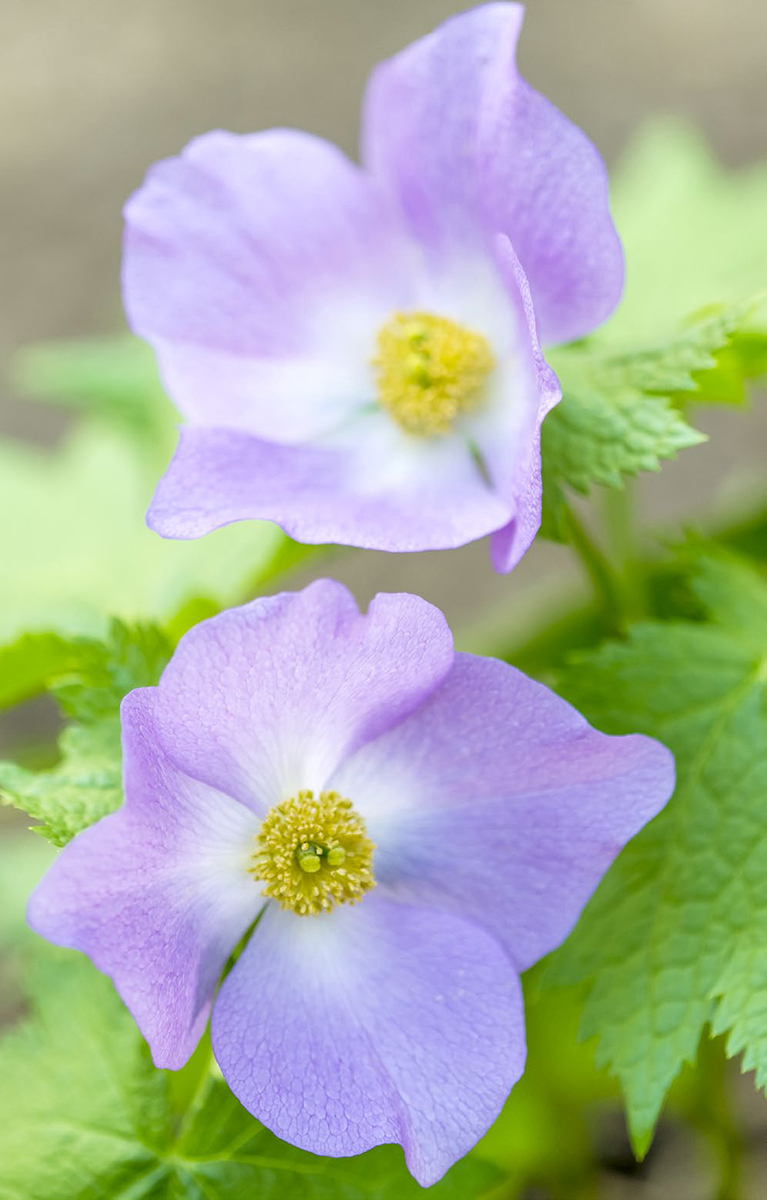
Difficult-to-grow Japanese wood poppy (Glaucidium palmatum) is a cool-loving woodlander cosseted for its lilac flowers.
For some, the words art and gardening never mesh.
To them, art is something found in a museum, a theater, or a concert hall. Art outdoors might be a sculpture park, where the plantings are merely a background. But for the Chanticleer staff, art is an everyday experience. Our gardeners are artists in every sense of the word, and they work in all media from plants to paint, wood, stone, metal, and clay. Their artistic vision sees beauty in the plants, stones, water, and pavement as visual elements. They create a garden experience where scent, sight, color, sound, and texture combine to make three-dimensional works of art that continually grow and change.
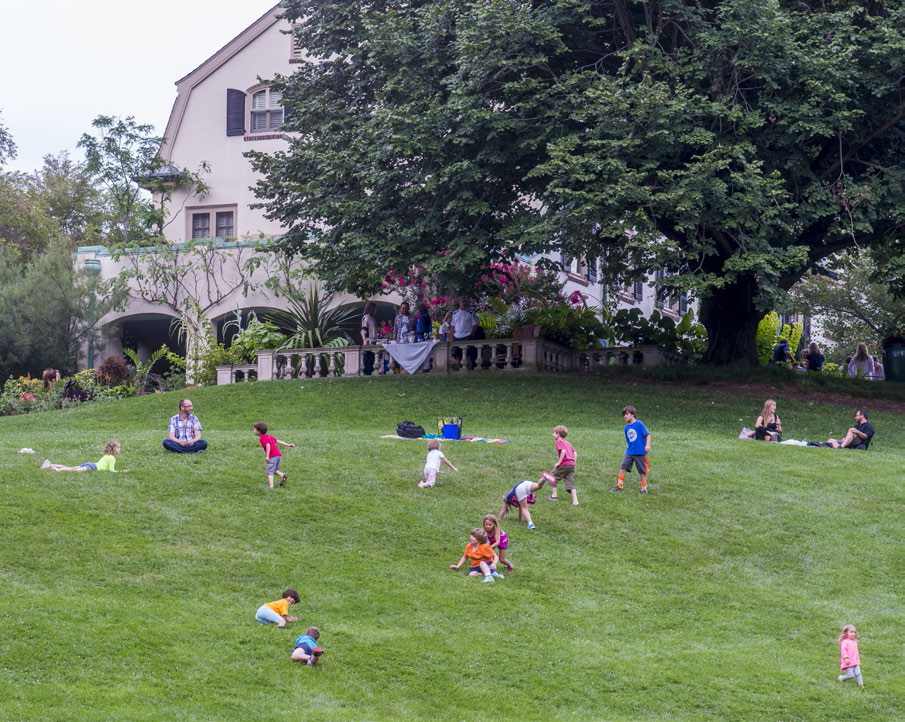
Visitors are treated as guests of the Rosengarten family, so adults and children feel welcome to enjoy the garden for pleasure and relaxation.
Their endeavors may be compared to a chamber orchestra performance, where a number of soloists come together to produce a single, unified piece. At Chanticleer, the conductor is the head gardener/executive director, whose role is to meld the exquisite work each gardener produces into one unified production: the garden. For the past twelve years, I have had the pleasure and privilege to be that conductor at Chanticleer.
This book aims to be a conversation between our staff and you. All of our staff have contributed in some way to the book, and many wrote individual sections explaining how they garden or design their areas. Their biographies are at the back of the book, if youd like to learn more about them. Our garden exists to inspire and is filled with ideas to try at home. We hope this book leads you to garden more frequently and freely. Chanticleer is our research laboratory where we try new plants, designs, and techniques all in the public view. Our guests see our successes and our failures, although we try to rush the losers to the compost pile. Horticulturist Dan Benarcik calls what we do gardening without a net. You might want to do the same in your own garden. Try. And try again. Continue what you like. Move on to something else if you are displeased. Plant enough so the loss of one plant is not tragic.
WHAT IS CHANTICLEER?
Some people dont understand the Chanticleer experience. Its true, we are not easily pigeonholed, perhaps because of our unique confluence of art and horticulture. We arent a typical botanical garden or arboretum. Were not a park. And were not really a museum. We were once a private estate, and we like to keep the feeling of a private garden, but everything we do has the purpose of inspiring our guests.
One editor of a lifestyle magazine tried to figure out what we are. He asked me:
Do you rent the space out?
No.
Do you do weddings?
No.
Do you have functions?
Occasionally for horticultural groups.
So, what is this place? Why do you exist?
We are a garden; a place of beauty, pleasure, escape.
But, I mean, what do you do? Why would anyone come?
Indeed.
But on further thought, perhaps I could have said: If we were a restaurant, wed be trying new taste combinations with lots of local fare. If we were music, wed be a chamber orchestra, playing classical and contemporary works, with each musician a soloist yet part of the ensemble. If we were a painting, wed be an impressionistic landscape with a bit of abstract expressionism thrown in. If we were dance, wed combine ballet with contemporary dance. But were none of those. Were a garden. I guess you could call us performance art.
Next page




